In the footsteps of the real prisoner of Chillon
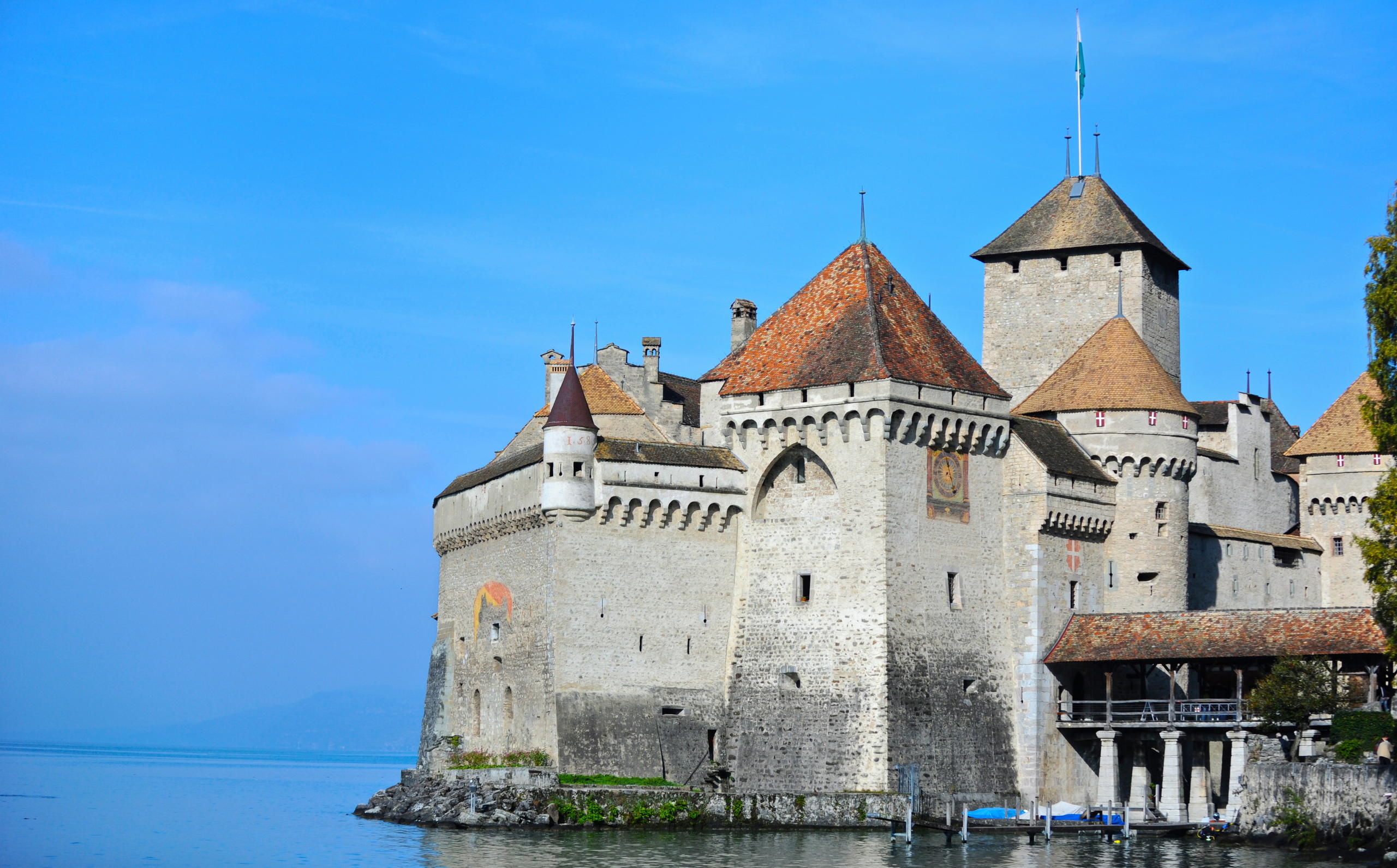
Château de Chillon is the most-visited monument in Switzerland. Its reputation is due in large part to Lord Byron’s poem, The Prisoner of Chillon. This fictional work is inspired by François Bonivard, a historical figure whose life is worthy of a novel.
We’re in the bowels of the medieval castleExternal link in a huge dungeon with vaults and pillars. A rock face makes up one wall, while another is lined with blocks of stone and a few small openings that provide slivers of light. On the other side of the wall is the vast Lake Geneva. But it’s not visible. We can only imagine it.
Inside, there’s not much to see. Gallows – a 19th-century addition to reinforce the dismal surroundings. An information panel with a short explanatory text and the portraits of two people. At first glance, the castle has many other features that should be more interesting.
But this is where the tourists throng. This cellar is the setting for Lord Byron’s famous narrative poem, The Prisoner of ChillonExternal link. The two portraits on the information panel are Byron (1788-1824) and François Bonivard (1493-1570), the prisoner who inspired his work.
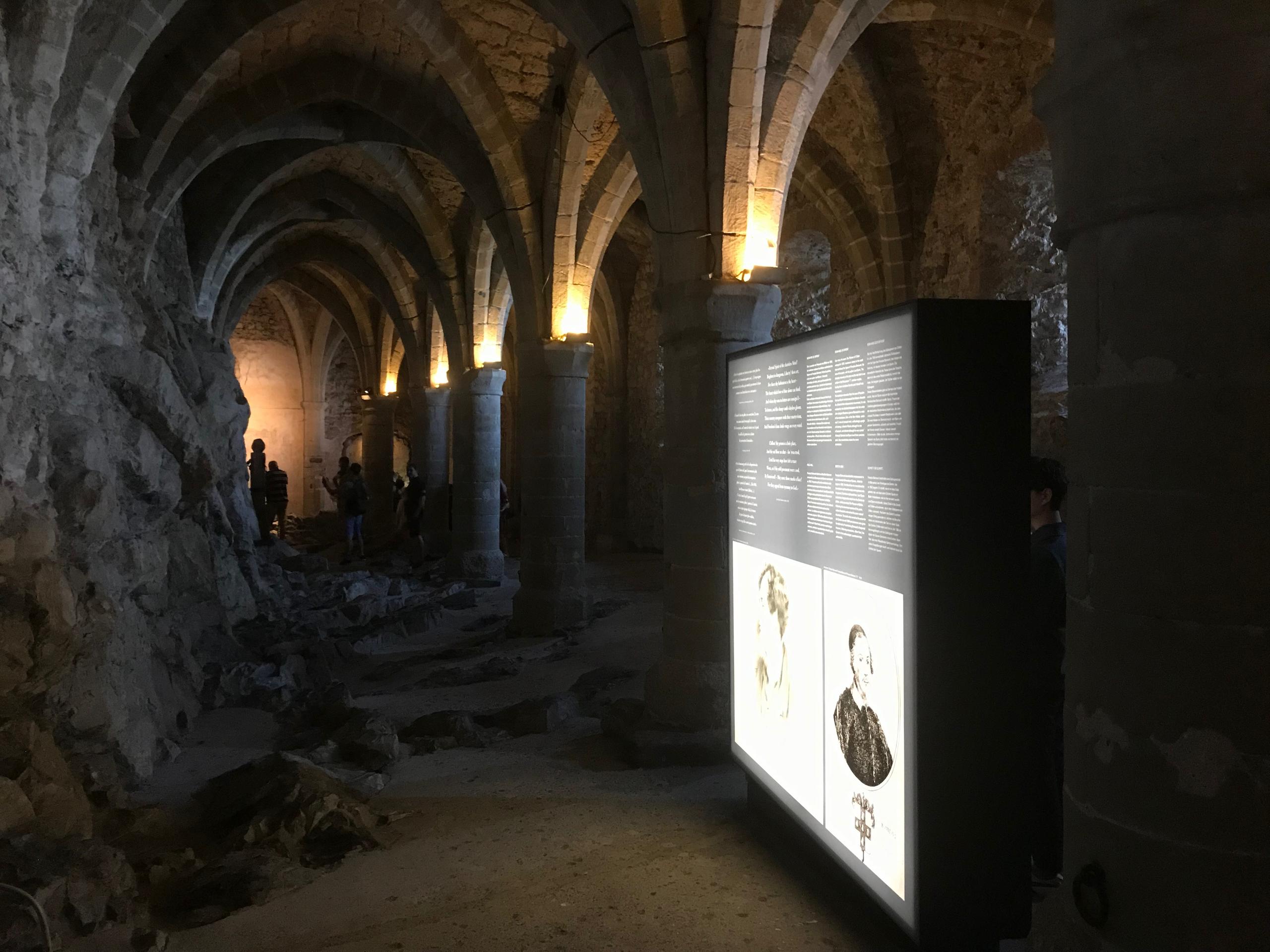
Byron arrived in the Lake Geneva region in 1816, in exile from Great Britain after a scandalous divorce.
“He was en route to Italy but fell in love with the area and ended up staying there for six months,” says Samuel Metzener, the castle guide. “He visited the castle with a drunk policeman who told him the story of the prisoner.”
The castle was already well-known at the time. Jean-Jacques Rousseau (1712-1778) chose to kill off his heroine here in his novel, Julie, or the New Heloise.
Must-see destination
Byron’s 392-line narrative poem is written in the first person and describes the prisoner’s feeling about being locked up. His confinement becomes so familiar that when the time comes for him to be released, he is reluctant to leave, as the last verse attests:
“My very chains and I grew friends,
So much a long communion tends
To make us what we are: – even I
Regain’d my freedom with a sigh.”
As a champion of the fight for freedom from tyranny, Byron’s prisoner is a romantic character. The Prisoner of Chillon quickly became a huge success, bringing international renown to the castle. The region even became a must-see destination for young British aristocrats doing the Grand Tour of Europe.
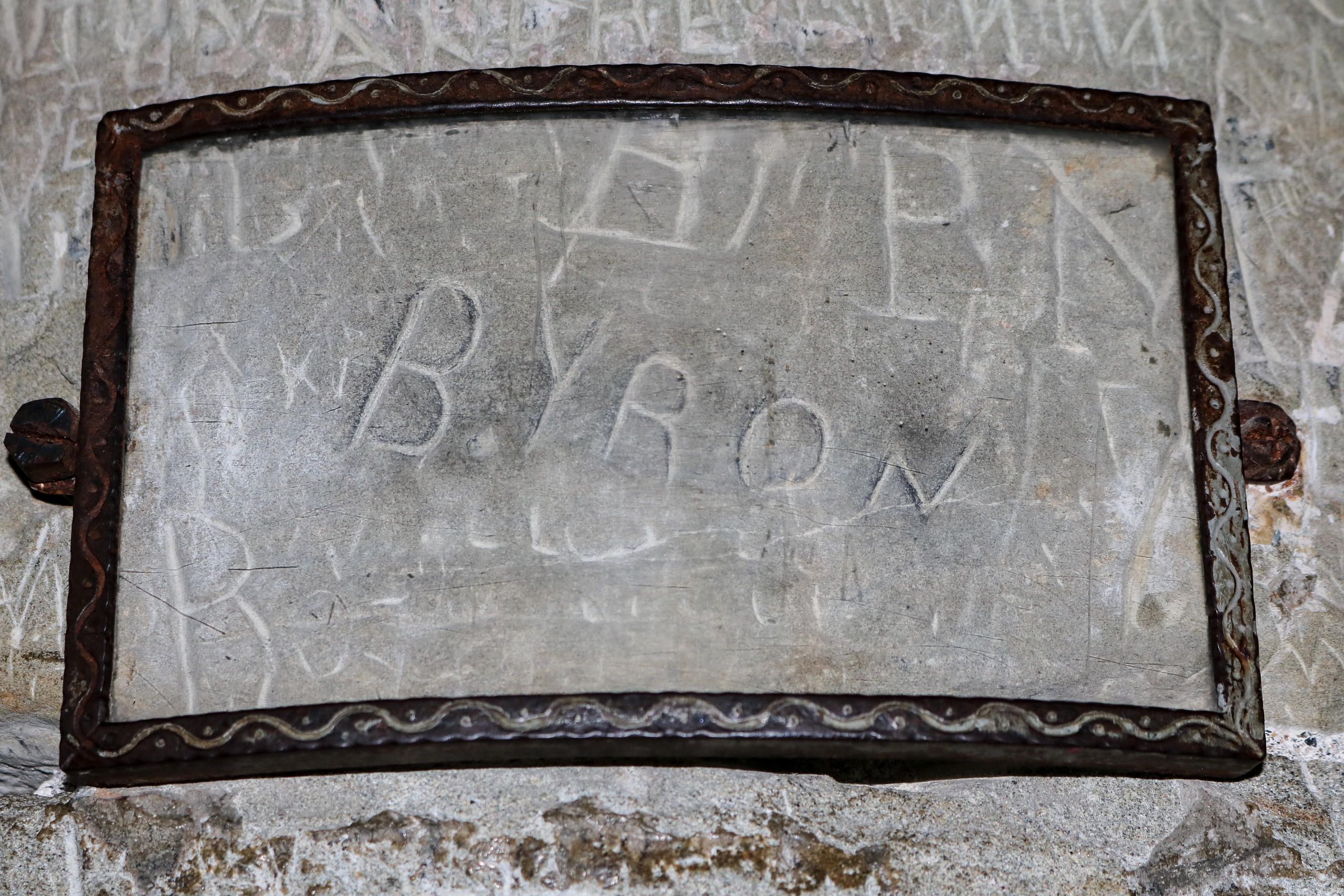
More
Following in Lord Byron’s Swiss footsteps
From priory to prison
In real life, the prisoner Bonivard was a nobleman around the time of the House of Savoy, the longest surviving royal house in Europe. At the time, the Duchy of Savoy ruled over the entire lake region, from Geneva to Chillon and present-day Canton Vaud (except for the Aigle region which fell into Bernese hands in 1475).
Born into a family closely linked to the Savoy Court, Bonivard succeeded his uncle as prior of St Victor in Geneva, on what today is the site of the Russian Church.
“That was the start of his problems. The priory generated large revenue and owned a lot land, which inflamed the greed of the Duke of Savoy,” Metzener explains.
As a further source of aggravation to the Duke, Bonivard supported the independence of Geneva and was close to the “Eidgenot” party, a movement identified with Swiss nationalism. Unwilling to give up his rights as a prior, Bonivard ended up in prison.
After an initial imprisonment in what is present-day Ain, he was captured once again in 1530 and locked up in the Château de Chillon. He was freed in 1536 when the Bernese invaded Vaud and he subsequently moved to Geneva.
His captivity in Chillon falls into two phases. During the first two years, his noble status continued to earn him privileges and he lived in two rooms within the castle. But when the Duke ruled these conditions too lenient, he spent the following four years underground in the dungeon.
Later describing the conditions of his imprisonment, Bonivard said he wore away the floor, creating a “path in the stone” by walking in circles within the jail. This cannot be confirmed, however.
“When we first excavated the castle at the end of the 19th century, we didn’t find any sign of these famous footsteps. The archaeologist who did the digging also had to explain what he had done to the Vaud government, who were unhappy that the myth of this prisoner had been tampered with,” Metzener says.
“We shouldn’t take Bonivard’s text literally. With this story about wearing away the stone, he was indulging in an exaggerated Renaissance literary style.”
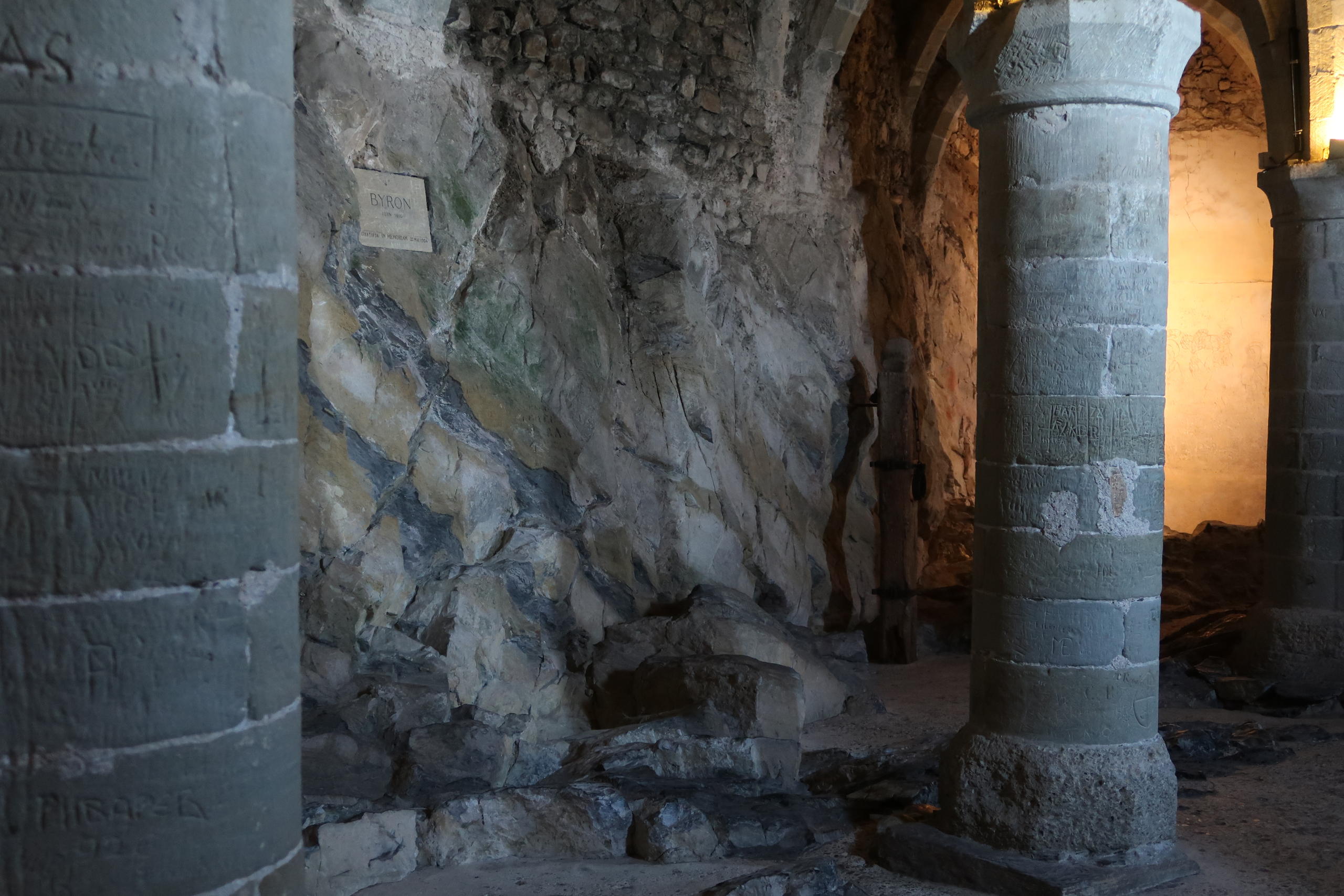
‘Bawdy’
Bonivard’s story doesn’t end with his release. During the next 30 years in Geneva, his life continued to be turbulent. The city became independent and went through the Reformation. Under these conditions, it was impossible for him to regain his title as prior. He converted to Protestantism, albeit half-heartedly.
As a champion of the city’s independence, he was granted special status. The authorities gave him a pension to compensate for the loss of his priory and entrusted him to write the history of the city.
Once again, Bonivard proved strong-willed. The liberal tone of his Chronicles of Geneva displeased the authorities who decided not to publish the manuscript, which was subsequently lost. Luckily Bonivard kept a personal copy for good measure.
Defrocked, the former prelate also had a colourful private life. Married four times, he was deemed “bawdy” in the prudish Calvin-era Geneva. Indeed, his fourth wife was executed by drowning for her own infidelity.
Bonivard’s imprisonment in Chillon was just a six-year episode in a long life that is worthy of a novel. That novel has yet to be written.
Château de Chillon
Located on a narrow road between Lake Geneva and a mountainside, Chillon is a strategic point in the route to Italy. Archaeological finds in the area date back to the Bronze Age.
The first mention of the castle dates back to 1150. Due to its location along the trade route to Italy via the Grand St Bernard Pass, it had a golden age. But that stature progressively declined at the turn of the 14th century, when the Duchy of Savoy’s administrative centre was moved to Chambery.
The shift of travel from the Grand St Bernard Pass to alpine passes further south accentuated Chillon’s loss in importance.
Under Bernese rule (1536-1798) the castle became a fortress and prison.
It became the property of Canton Vaud in 1803 and was restored at the end of the 19th century, welcoming paying visitors as of 1896. It was the most visited monument in Switzerland in 2018 with 402,847 entries. Managed by a foundation, it is 96% self-financed through entrance fees, products and room rentals.
(Translated from French by Jessica Dacey)

In compliance with the JTI standards
More: SWI swissinfo.ch certified by the Journalism Trust Initiative



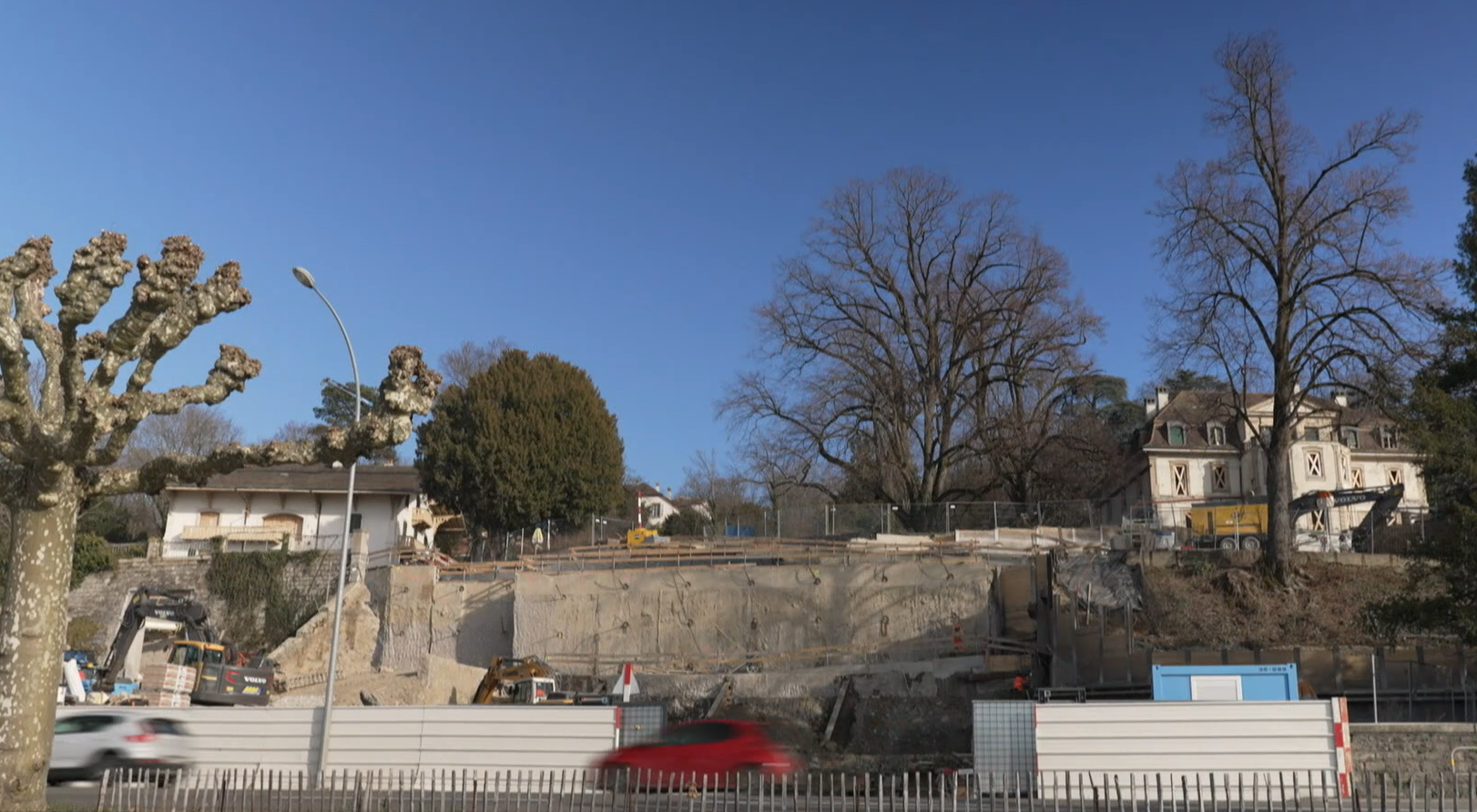






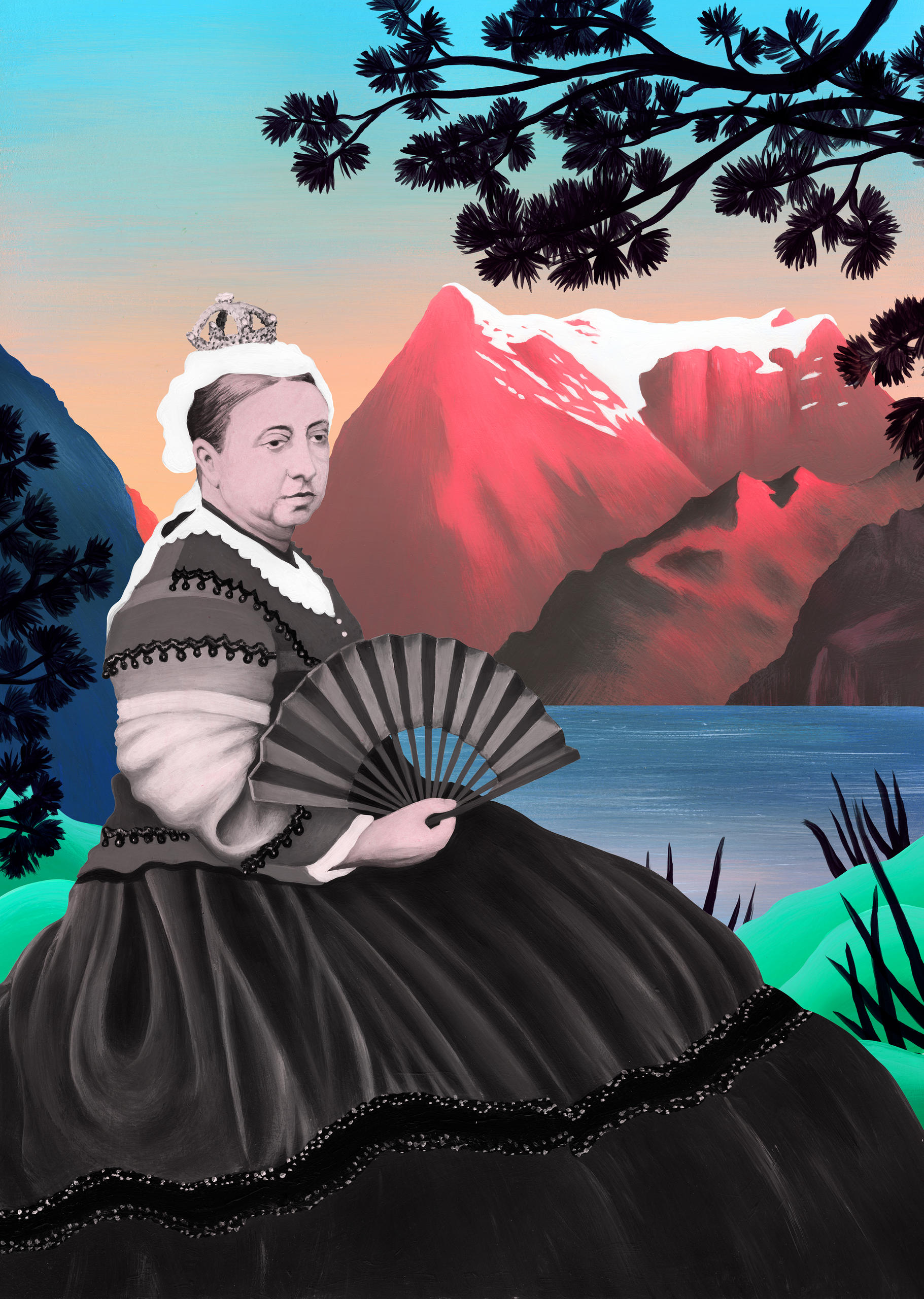
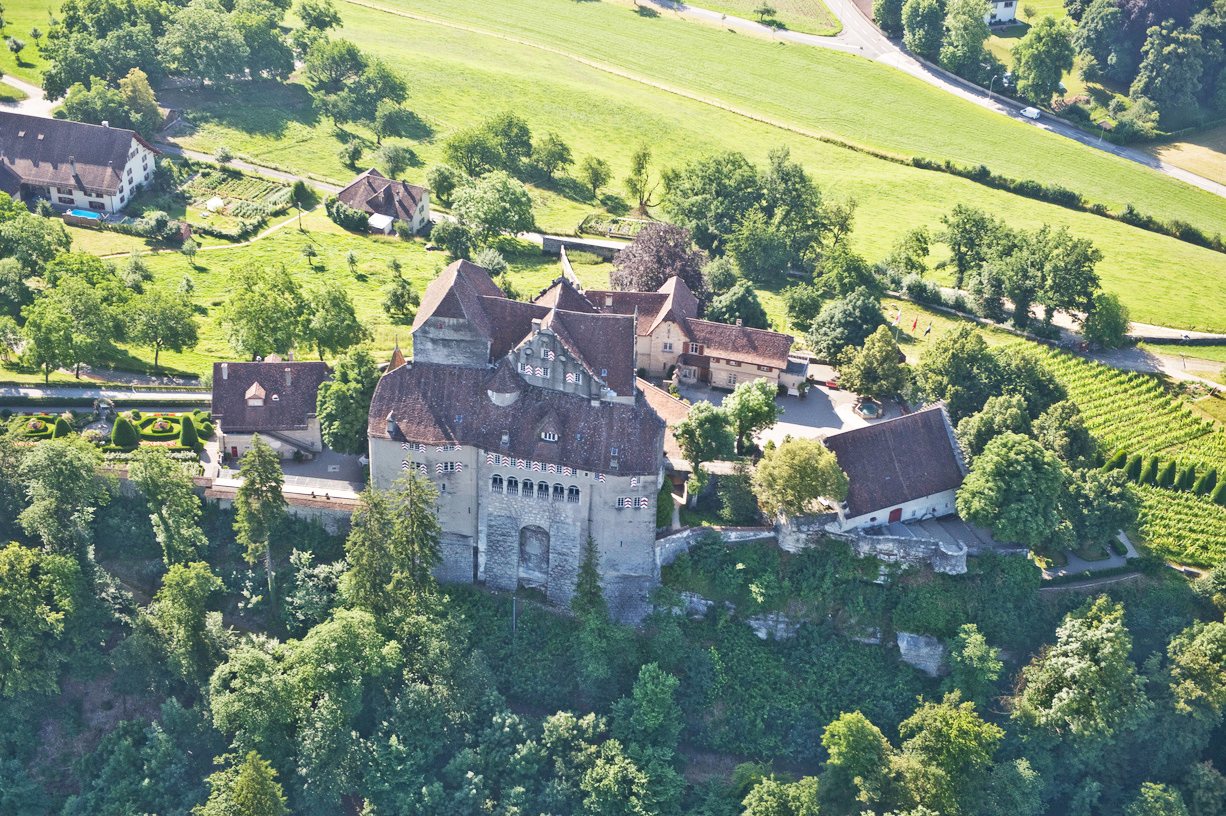

You can find an overview of ongoing debates with our journalists here . Please join us!
If you want to start a conversation about a topic raised in this article or want to report factual errors, email us at english@swissinfo.ch.